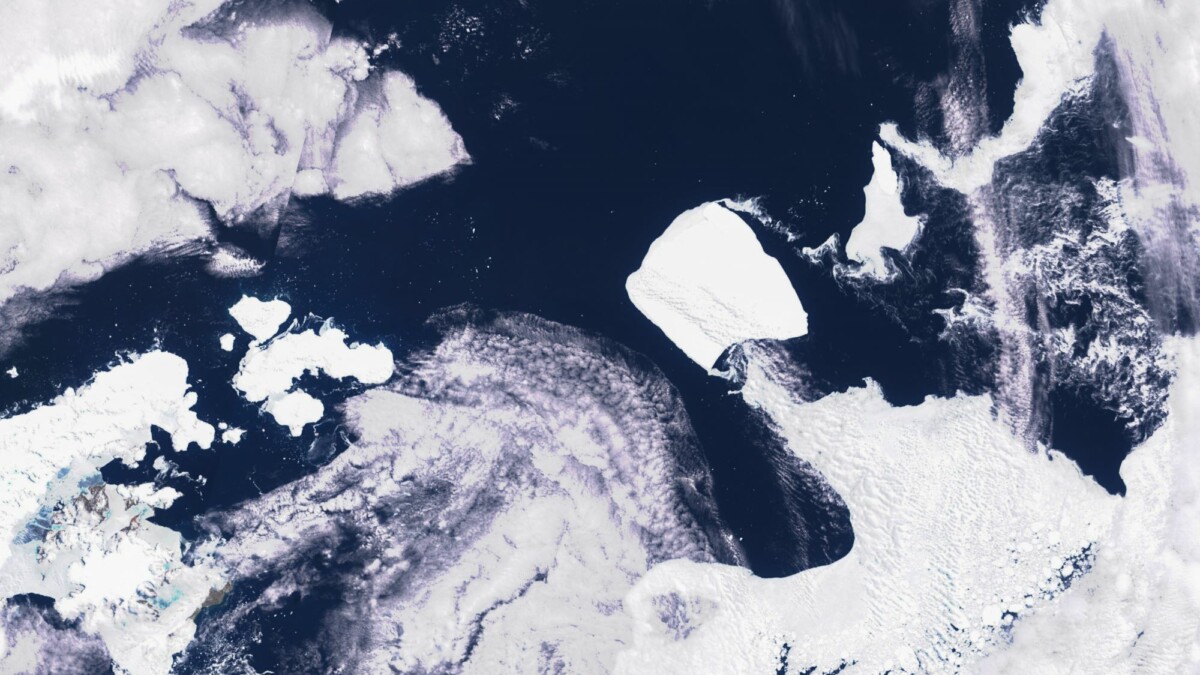Ian Strachan, head of the expedition, told BBC News that the glacier was being washed away by waves between three and four metres, so its erosion was continuing. The mission conducted a drone survey of the iceberg on Sunday.
A23a, with an area of about four thousand square kilometres, broke away from the white continent in 1986, but moved only a few months ago and began drifting away from the coast in the Weddell Sea. The iceberg is currently drifting along the Antarctic Current, which rotates clockwise around Antarctica.
The current is pushing the A23a along with the prevailing westerly winds towards the South Orkney Islands, which lie about 600 kilometers north-east of the tip of the Antarctic Peninsula. The size and movement of A23a are tracked through satellite observations. The thickness of the ice mass exceeds 300 meters in some places, and its weight is close to a billion tons, but it decreases every day.
The image shows the A23a iceberg as seen from the Copernicus satellite on January 15, 2024. Image: AFP PHOTO / Copernicus Sentinel-3 Satellite Image © 2023 Maxar Technologies












































